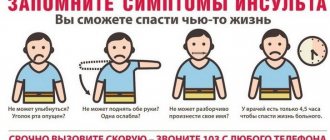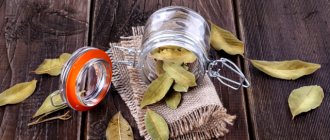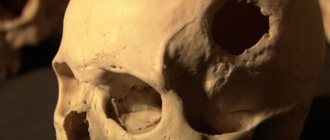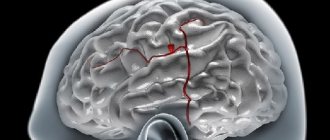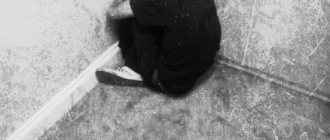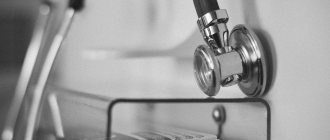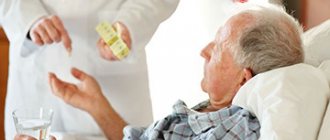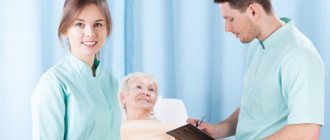Stroke
- an insidious disease that occurs abruptly and is characterized by disruption of the circulatory process in one or multiple areas of the brain. Vascular diseases of the brain, atherosclerosis, problems with blood clotting are dangerous problems that ultimately lead to acute cerebrovascular accident. To prevent stroke, doctors at the Medical Di Center recommend that patients over 50 years old regularly consult with a cardiologist and neurologist and take a biochemical blood test and coagulogram.
There are two different types of stroke - ischemic (the prerequisite for the development of which is narrowing, partial or complete blockage of the artery) and hemorrhagic (associated with damage or complete rupture of the vessel). Ischemia causes disruption of blood circulation in the vessels of the brain and causes the death of areas of its soft tissue. The degree of tissue injury depends on the duration of oxygen starvation and the general state of human health.
The volume and nature of brain damage determines the structure and duration of the patient’s subsequent rehabilitation program after a stroke.
Stroke and its consequences
A stroke is a failure of blood circulation in the brain, a sharp narrowing of blood vessels that develops rapidly. Within a few minutes, partial or complete paralysis may occur (more often, the left side of the body is paralyzed).
Paralysis occurs due to oxygen starvation of the brain, which is a consequence of blockage or narrowing of blood vessels, as a result of which the functioning of the arms and legs deteriorates, the sensitivity of the body disappears, and speech is completely or partially impaired.
Today, stroke is considered one of the most common and dangerous pathologies. The disease develops against the background of chronic stress, fatigue, poor nutrition, lack of physical activity, bad habits and irregular visits to the doctor. Most often, entrepreneurs, businessmen, heads of families and people who ignore the dangerous symptoms of high blood pressure for years are susceptible to stroke:
- sharp girdling headaches;
- insomnia;
- numbness in the limbs;
- heartache.
In medicine, there are two types of stroke:
- Ischemic - resulting from blockage of blood vessels due to the formation of a blood clot. In order to save a life, the patient is given a special drug that destroys the blood clot;
- Hemorrhagic - hemorrhage forms hematomas that compress the brain. This type of stroke requires immediate surgery.
If you suspect a stroke, you should call an ambulance, since you will not be able to stop the attack on your own and the patient faces a quick death.
The danger of a stroke lies in the fact that the patient’s brain activity is disrupted after hemorrhage - the patient speaks poorly, walks poorly, and in some cases remains paralyzed for life or connected to an artificial feeding apparatus. Most often, stroke survivors become disabled.
Consequences of a stroke:
- Complete or partial impairment of musculoskeletal functions;
- Loss of vision;
- Speech impairment;
- Memory loss, etc.
The degree of organ damage during a stroke is determined by the results of tomography, on the basis of which a conclusion is made by a neurologist. If the hematoma is localized in a timely manner, the patient requires intensive rehabilitation.
General rules of treatment
A favorable outcome for a disease such as acute stroke depends directly on the time of initiation of qualified medical care.
In the acute period, stroke treatment is carried out in a hospital, the strategic goals are:
- restoration of blood flow through the thrombosed artery;
- minimizing the risk of developing early neurological complications - cerebral edema,
- convulsive syndrome;
- improvement of functional indicators;
- reducing the risk of fatal complications from the heart and blood vessels - death from coronary artery disease and other cardiovascular diseases.
Before hospitalization in the ambulance, measures to reduce intracranial pressure should already begin, regardless of the type of stroke. These include elevated head position, oxygen therapy, and hemodynamic control.
Widely used methods of neuroprotection, such as intravenous drips of magnesium (magnesium sulfate) and sublingual administration of the drug Glycine, have not proven effective. An ambulance must transport a patient with a suspected stroke to a hospital that has CT scanning capabilities. After hospitalization, in the first hours the patient should be in intensive care.
How to treat a stroke in the acute period? The general principles of intensive care for all types of stroke are:
- blood pressure monitoring - maintaining this indicator 10% higher than the numbers to which the patient was adapted before the stroke in order to establish blood supply to the brain in conditions of edema;
- heart rhythm monitoring - if disturbances are detected, antiarrhythmic drugs are prescribed, as well as drugs to improve the pumping function of the left ventricle and myocardial nutrition;
- control of metabolic indicators in the body - normalization of body temperature, maintaining normal blood sugar levels, water and electrolyte balance, oxygenation, etc.;
- reduction of swelling of the brain substance;
- symptomatic therapy is carried out when appropriate symptoms occur - anticonvulsants, painkillers, antibiotics, connection to a ventilator, etc.; prevention and treatment of possible complications - for example, pneumonia, pulmonary embolism, phlebothrombosis, stress stomach ulcers, etc.
Ischemic stroke
In this situation, conservative methods of treating stroke are used. All patients, within 4-4.5 hours from the moment the first signs of cerebral infarction appear, undergo thrombolytic intravenous therapy to dissolve the blood clot that has blocked the cerebral vessel. This is done to eliminate the cause of the disease and prevent recurrent thrombosis.
The main drug is tissue plasminogen activator (actilyse), a protein that converts the precursor of the enzyme plasmin into its active form, which has a fibrinolytic effect (dissolves blood clots). When started early, this method can quickly alleviate the patient’s condition (motor, speech disorders, etc. decrease).
Treatment of ischemic stroke with thrombolytic drugs is carried out only with the consent of the patient or his relatives with the exact time of onset of neurological symptoms and a confirmed diagnosis on CT. Contraindications are the patient's serious condition and lack of consciousness.
Another method is the prescription of antiplatelet drugs, which reduce the formation of blood clots by inhibiting platelet aggregation. This is not an alternative to thrombolysis, but a necessary measure if it is impossible to carry out it or an addition to it (carried out a day or more after administration of the plasminogen activator).
For treatment after a stroke that occurred no later than 48 hours ago, Acetylsalicylic acid is used in a daily dose of 100 to 325 mg, Dipyridamole MB 200 mg twice a day or Clopidogrel once a day in a dose of 75 mg. Subsequently, Aspirin is prescribed for long-term oral administration (6-9 months), especially to patients with angina pectoris who have undergone stenting or myocardial infarction. Patients with a high risk of venous thrombosis and pulmonary embolism (obesity, diabetes mellitus, long-term bed rest), and cardiac arrhythmias are indicated for subcutaneous administration of heparin drugs followed by a transition to oral anticoagulants (warfarin, Xarelto).
Surgical methods for cerebral infarction are used less frequently; one of them is the installation of a stent to restore lumen in the vessels of the neck or head.
Hemorrhagic stroke
For hemorrhagic strokes, various neurosurgical interventions are very often used. Before the operation, a CT scan of the brain, an angiographic study, and an ultrasound scan are required. With a hemorrhagic stroke, hemorrhages, especially deep ones, can lead to blood breaking into the ventricles and the development of occlusive hydrocephalus (dropsy of the brain), which will require bypass surgery.
Surgery for strokes is carried out for the following purposes:
- remove as much as possible all existing blood clots with minimal damage to the brain substance;
- reduce intracranial pressure at the local and general level;
- restore liquor dynamics.
Contraindications for surgery are the patient's advanced age (over 75 years), lack of consciousness (coma), and the presence of severe concomitant diseases (decompensated diabetes, renal failure, purulent-septic conditions, oncology).
One of the main problems arising with this type of stroke is pronounced vasospasm in the area of hemorrhage. This can further impair blood supply, increase brain swelling and increase intracranial pressure. Antispasmodics are used to relieve spastic phenomena. During the first 24 hours, the patient is prescribed drugs to increase blood clotting in order to prevent repeated hemorrhages or increased bleeding.
Duration and stages of rehabilitation after stroke
Success in recovery from the consequences of a stroke largely depends on when rehabilitation began. The sooner the patient begins to follow the doctor’s instructions, the greater the likelihood of a complete recovery.
The recovery of a stroke survivor is divided into several stages:
- The early stage of recovery begins already 1 week after the localization of the attack. Immediately after the patient comes to his senses, a brain tomography is performed. A therapeutic massage is prescribed to relax and tone the muscles of the musculoskeletal system. After this, the patient can begin performing therapeutic exercises. The duration of early rehabilitation is from 1 to 6 months. During this period, the probability of recovery from the consequences of a stroke increases to 60%;
- Late recovery begins in the first six months, when the likelihood of a recurrent attack decreases to 40%. During this period, it is recommended to give up bad habits (smoking, alcohol). The patient is prescribed a special diet low in fat, salt, sugar and caffeine. Active physical activity is prescribed, aimed at developing and maintaining fine and gross motor skills;
- The period of long-term consequences is from 7 months to 1 year. Rehabilitation measures are aimed at restoring the range and strength of movement and returning lost motor functions. This stage is the most favorable, as it gives maximum results in recovery;
- The residual stage begins 1 year after the attack is localized and lasts up to 6 years. At this moment, the body is least susceptible to rehabilitation actions.
Today, the most effective way to restore speech, vision and the musculoskeletal system is to undergo rehabilitation in specialized centers.
Rehabilitation at home is only possible if you have equipment for the development of certain muscle groups. In the first months of adaptation, the patient will need a nurse.
Rehabilitation after a stroke at home includes:
- Physical activity: development of fine and gross motor skills;
- Massage to stretch stiff limbs. If a person is in a lying position, the muscles should be massaged to prevent bedsores;
- Regular walks in the fresh air.
The minimum period of rehabilitation after a stroke is 6 months.
When undergoing rehabilitation, not only physical activity is important, but also social adaptation. Nervous tension and awareness of one’s problem can cause the patient to withdraw into himself.
Social adaptation
An obligatory companion of the post-stroke period in many patients is social maladjustment, which is associated with impaired motor activity, speech problems, pain, disruption of the pelvic organs, loss of social status and familiar place in society (this is especially difficult for people of working age).
Such patients really need a healthy family climate. They should never feel like a burden. To do this, you can come up with a number of household chores that a sick person can perform and feel like a useful and active member of the family.
It is good if a person can return to his previous job or find another that is more suitable for health reasons. In developed countries of the world, there are special organizations that help people who have suffered a stroke find work.
If a person is already retired, then he needs to be occupied with other pastimes, for example, knitting, collecting, sewing and other hobbies.
For a person’s rapid recovery after a stroke, social adaptation is very important; the patient should not feel like a burden
It is important to provide the person with constant communication and periodic changes of environment. You can take the patient with you to the store, to the cinema, or on a visit. Also, from time to time a person can relax in sanatoriums.
Restoring mobility
The most common consequence of a stroke is paralysis of the upper and lower extremities. As a rule, the right or left side of the body does not function (depending on the extent of damage to areas of the brain). This is due to the death of cells responsible for body mobility.
Due to increased muscle tone, the limbs take a forced position: the elbow and hand are bent, the fingers are clenched into a fist, the leg and foot are slightly turned inward. If you do not begin to restore mobility in a timely manner, the limbs will be fixed in this position forever.
Limb mobility is restored in the following order:
- Initially, you need to be examined by a physiotherapist. The doctor will carefully examine the picture of the disease and prescribe a suitable course of treatment;
- Fix the limbs in the correct position. If the arms and legs are completely paralyzed, in order to avoid joint sprains and injuries, their rigid position is ensured - a plaster cast or bandage is applied that fits tightly to the body;
- Rehabilitation massage. Partial or complete paralysis of the limbs after a stroke leads to tissue atrophy. This process can only be slowed down with the help of therapeutic massage. It relaxes muscles, joints, tones blood vessels and ensures blood flow. Massage can be done by both a specialist and loved ones, after appropriate consultation with a doctor;
- Performing exercises to gradually develop the limbs - first you need to learn how to move the shoulder joint, then the elbow, wrist, hand, and only then the fingers.
Massage after a stroke is one of the most effective methods of restoring mobility, as it ensures normal blood flow to muscle tissue and stimulates their growth.
The mobility of the limbs of the musculoskeletal system is effectively restored with consistent exercises. Physical therapy is divided into 3 stages:
- passive gymnastics in a lying position;
- performing exercises while sitting;
- standing muscle training.
Gymnastics in a supine position
Passive gymnastics is prescribed in the first week after a stroke, when the patient cannot yet sit and walk. Exercises can be performed independently or with the help of a specialist. The purpose of gymnastics in a supine position is the primary stimulation of neuromuscular tissue.
In the first days after a stroke, gymnastics should take no more than 10 minutes. Gradually the time increases to half an hour.
Gymnastic exercises use various devices that help develop muscles - hand exercisers, rubber bands. Alternately, the upper and lower limbs are moved to the sides, then in a circle, the legs are bent and unbent, raised up, etc. This gymnastics involves all muscle groups and helps improve blood flow.
Gymnastics in a supine position:
- Leg exercise “Bicycle” - raise the patient’s feet and make several rotational movements, alternately bending and unbending each leg;
- Exercise for arms “Pull-ups” - lying on your back, stretch your arms back, grab the headboard of the bed, tense your muscles and try to pull yourself up.
Passive exercises should be performed about 50 times every day.
In a sitting position
After a week-long course of training the musculoskeletal muscles while lying down, immediately after the patient recovers, you can begin gymnastics in a sitting position:
- Sit on the bed, place your feet on the floor, and grab the bed with your hands. As you inhale, straighten your back, then, exhaling, relax;
- While sitting on the bed, try to lift each leg without bending the knee;
- While sitting in bed, place a pillow under your lower back. Bend and lift one leg, while inhaling, try to pull it to your chest, holding it with your hands. The same should be done with the second leg.
Each exercise should be performed in three sets of 10-15 times. If possible, you should also stretch your feet and hands, clench and unclench your fingers.
Such simple exercises help tone your muscles, strengthen them and prepare for more active physical activity while standing.
Standing
Standing exercises are performed 3 weeks after a stroke and only if the patient can walk and stand independently.
The most effective exercises for rehabilitation are:
- Rotations of the torso with arms spread to the sides. It is necessary to repeat in three sets of 6 - 7 times;
- Squats are performed strictly under the supervision of a doctor. The exercise should be performed slowly: squat as you inhale and stand up as you exhale. Repeat in two sets of 4 - 5 times. If you feel dizzy, gymnastics should be stopped;
- Lunges. One leg must be moved forward and slightly bent at the knee. Clench your fingers into a fist, raise your arms to your shoulders. As you exhale, return to the starting position. Repeat in 3 sets of 7 - 10 times;
- Walk in place for 1 minute.
Psychological rehabilitation
To a large extent, the effectiveness of rehabilitation depends on the perseverance, patience of relatives and the patient himself. A very important component of psychological rehabilitation is the support of loved ones. It is necessary to constantly be optimistic, instill in the sick person faith in success, constantly encourage and praise.
It is necessary to take into account that astheno-depressive syndrome is a common consequence of a stroke, therefore you should not be offended by the victim if he is in a bad mood, yells at you for no reason, or refuses gymnastics and massage. In this case, you should not insist on medical procedures, but try to draw the patient’s attention to other things, for example, talking about your favorite TV show.
The best option for psychological adaptation is the help of a professional psychotherapist who has experience working with post-stroke patients.
Speech restoration
Speech impairment is one of the most common consequences of a stroke. In medicine, this defect is called aphasia and can have varying degrees of severity, reversibility and duration. After a micro stroke, speech can return to normal after a few days, after a major stroke - after 1-2 years.
Depending on the degree of brain damage, speech can be restored completely or partially.
The chances of being able to improve your speech depend on the following factors:
- time to see a doctor;
- timeliness of rehabilitation;
- types of aphasia - motor or sensory.
Motor aphasia is characterized by the inability to produce phrases or words. Sensory aphasia is most often irreversible, since with such aphasia the main areas of the brain are affected - the Wernicke center. The person does not understand speech and cannot say anything.
Speech defects after a stroke are restored in a comprehensive manner:
- taking medications;
- classes with a speech therapist;
- speech gymnastics class;
- surgical intervention (if necessary).
Rehabilitation therapy after a stroke should begin as soon as possible. In the first days after an attack, the recommended time for sessions with a speech therapist is from 5 to 20 minutes. Gradually, this time should be increased to 2 hours until speech is completely restored.
Effective exercises for restoring speech after a stroke:
- Extend your lips (like a kiss) and hold in this position for 10 seconds;
- Squeeze your upper lip with your lower lip;
- Throw back your head, open your mouth and try to stick out your tongue. Maintain the state for as long as possible. Relax. Repeat 5 times in 3 sets;
- Curl your tongue into a tube, compress and unclench your lips for several seconds, and hold this state;
- Stick out your tongue and try to reach the tip of your nose and chin.
Stroke symptoms: basics
Symptoms of a stroke appear quite quickly, so it is important to respond to them in a timely manner. You can learn about the features of the nature and symptoms of stroke in more detail from our articles. Let us briefly note the following signs of this condition, which are important to pay attention to when they appear, in particular:
- sudden numbness of the face or limb or their paralysis (loss of motor function), especially if such manifestations occur on one side of the body (i.e., on the right or left side);
- loss of consciousness;
- there is a disturbance in gait, coordination, balance, and visual perception;
- sudden causeless headache;
- sudden onset of serious disorders associated with speech reproduction: symptoms of UPD (a person cannot Smile (the smile is crooked, the corners of the lips take an inappropriate position), Speak (pronunciation is impaired, it is difficult to repeat a simple sentence), Raise hands (although this sign does not relate to speech, but it is considered precisely in conjunction with the indicated conditions; a person cannot raise his hands in the same way));
- when the tongue sticks out (if you ask the patient to show it), there is either an irregularity in its shape or curvature, recessing to one of the sides;
- when asked to stretch out your arms, palms forward, with your eyes closed, one of the arms involuntarily “slides” down or to the side.
Memory recovery
The ability to think, read and write is a physiological process, the actions of the cortex of both hemispheres of the brain. This is how the organ records and retains the necessary information and forces a person to act. Memory is formed when new connections arise between neurons in the brain. Highlight:
- short-term memory;
- long-term memory;
- RAM.
During a stroke, any memory can be affected, with short- and long-term loss considered the most dangerous. A person may not remember events before or after the stroke.
Memory must be restored immediately, since if the rehabilitation period is missed, the patient’s condition will only worsen.
Memory loss is often accompanied by a severe depressive state, so rehabilitation therapy must necessarily include:
- working with a psychologist;
- drug therapy;
- therapeutic physical exercises;
- massage.
Among medications, patients are prescribed drugs that improve blood circulation and brain function. These include glycine, phenotropil and aminalon. The tablets should be taken daily for 1 - 2 months. If long-term memory is lost, medications are taken longer.
Any physical activity has a beneficial effect on brain function, so patients are required to be prescribed exercise therapy.
Exercises to restore memory after a stroke:
- Finger games. The essence of this exercise is to bend the fingers after the patient has memorized a short verse. With daily training, memory improves significantly;
- Associative thinking - asking the patient to talk about objects, actions and create interconnected chains between them. This improves the thought process;
- Playing cities will significantly improve memory and develop logic.
Contraindications
Although physical activity, especially at home, is recommended, not in all cases there are situations when exercise is contraindicated:
- severe cardiovascular diseases;
- with pulmonary edema;
- the presence of constant pain symptoms;
- the disease is progressive;
- The patient developed psychological abnormalities.
After an attack, home physical exercises are beneficial, but can also cause harm, so before prescribing them, especially in a home atmosphere, the doctor must be fully familiar with the patient’s history and take into account the presence of abnormalities after the illness.
Stroke is a terrible disease, but by seeking help in time, the patient can fully recover. The rehabilitation process must necessarily include physical activity, which gradually increases as the condition improves. All this should take place on the recommendation of a doctor, and best of all, under his supervision.
Top ↑
Nutrition during rehabilitation
One of the main causes of stroke is bad habits and poor nutrition. Therefore, rehabilitation therapy should begin with changes in the usual lifestyle.
Your daily diet should include foods containing large amounts of vitamins and minerals. These include fruits, vegetables, legumes, nuts, herbs, seafood, and meat.
Do not use:
- coffee and caffeinated drinks (tea, soda);
- salted, pickled products, as well as smoked meats and sausages;
- fatty pork meat;
- bakery products;
- sweet;
- mushrooms.
Recovery drugs
During the rehabilitation period after a stroke, the patient must be prescribed medications that thin the blood and prevent the formation of blood clots. The most effective today are:
- Kurantin;
- Cardiomagnyl;
- Warfarin;
- Aspirin;
- Trental.
The dosage depends on the accompanying symptoms. In the first weeks after an attack, 2 tons are prescribed 3 times a day. As further prevention, you should drink 1 t per day, for a course of 3 months.
In addition to drugs that normalize blood pressure, antispasmodics, vasotonics, decongestants and sedatives are also prescribed.
Rehabilitation after a stroke is based on symptomatic therapy. If the patient has brain hypoxia, antioxidants and antihypoxants (Mexidol) are used.
Sedatives can fight depression, eliminate insomnia and the feeling of fear of a new attack. Taken together, this therapy has a positive effect on the patient’s overall well-being. To improve brain function, nootropics (glycine, phenotropil, etc.) are prescribed.
Physiotherapy
The Center for Restorative Medicine and Rehabilitation of the Medical Rehabilitation Center of ROSZDRAV is equipped with modern physiotherapeutic equipment. To mobilize all adaptive systems of the body, the following are carried out: mesodiencephalic modulation, electrophoresis of medicinal substances. To reduce increased muscle tone, heat therapy (ozokerite, paraffin, mud applications), magnetic therapy, laser therapy, and reflexology are used.
One of the most effective new developments in domestic medicine is multichannel programmable electrical stimulation of muscles . This is a method for correcting a person’s pathological motor stereotype and serves to consolidate the physiological images of movements that are modeled during sessions of programmed stimulation. The clinical and neurophysiological essence of artificial movement correction lies in the exact temporal correspondence of the programs of artificial and natural muscle excitation in human motor acts.
Electrical stimulation of muscle groups is carried out in various phases of walking. The procedure can be performed in a stationary mode, when the patient is in a passive state; in this case, the portable built-in computer, according to the program specified by the doctor, sends impulses one by one to each muscle group, simulating and reproducing the entire walking cycle. When this device operates autonomously, electrical stimulation is more physiological, because carried out while walking. The phasic sending of electrical impulses to the muscles occurs in exact accordance with the patient’s walking rhythm, which is provided by a touch sensor attached to the patient.
Vibration stimulation of the foot support points is also used. Alternating phase vibration effects on the points of the foot occur in cyclic walking mode. The device is equipped with headphones that imitate the sounds of footsteps. Local vibration impact on the support zones of the sole in the rhythm of walking is carried out at a speed of 15 to 80 steps per minute. During a vibration stimulation session, the sensory image of walking is recreated.
the Neuroergometer hardware and software complex , you can quickly assess the energy state of the brain and the body’s adaptive systems. This objective method of dynamic observation of the functional activity of the brain, both as a whole and in its individual parts, serves as a reliable indicator of the effectiveness of the treatment process.
To conduct biomechanical studies, a computer complex for analyzing movements “ Biomechanics ” is used. A study of human gait is carried out using all classical methods simultaneously: three-dimensional registration of spatial movements in various joints and segments of the body; recording the distribution of load on the supporting areas of the foot; functional myography; statokinesiogram - the trajectory of the center of pressure exerted by a person on the plane of support; dynamic stabilometry – study of the support reaction in walking (based on the biofeedback method). The process of collecting and processing information is automated, which allows you to receive a full report on the study immediately after registering the parameters.
Folk recipes
The consequences after a stroke can become irreversible. Therefore, during the rehabilitation period, complex therapy should be carried out aimed at healing the body, renewing cells, restoring blood flow, blood vessels and the immune system. You can also use folk remedies at home.
The most effective medicinal herbs for stroke are:
- celandine - improves blood flow;
- rose hips - prevents the formation of blood clots;
- lemon - thins the blood, removes waste and toxins from the body;
- peony - strengthens the immune system;
- ginger - strengthens the walls of blood vessels, etc.
Here are 2 popular folk recipes for medicines that can be prepared at home.
Recipe 1. Mix 20 g of coltsfoot, 50 g of mint, rose hips and celandine, pour 250 g of boiling water. Let it brew for 20 minutes. After this, add a slice of lemon and chopped ginger root. Drink 1 tbsp. l. before meals for 1 month.
Garlic and citrus fruits also effectively combat the effects of stroke. These products help restore blood and prevent the risk of a second attack.
Recipe 2. Squeeze 1 lemon, chop 2 heads of garlic and add 1 tbsp. l. honey Mix thoroughly and pour into a convenient container. Should be stored in the refrigerator. Take 1 tsp daily. mixture in the morning for 2 months.
Prevention of complications
According to clinical data, recurrent stroke occurs in 50% of cases. It can be triggered by:
- severe nervous tension;
- frequent stress;
- drinking alcohol, smoking;
- unhealthy foods;
- medications that are taken without consulting a doctor (usually anti-blood pressure medications, sleeping pills, antidepressants).
After the first attack, it is extremely important to take measures for proper and professional recovery. Life after a stroke requires a special approach to treating complications and preventing another attack. Doctors recommend leading a healthy lifestyle, eating right, avoiding stressful situations and visiting a doctor regularly.
Source


